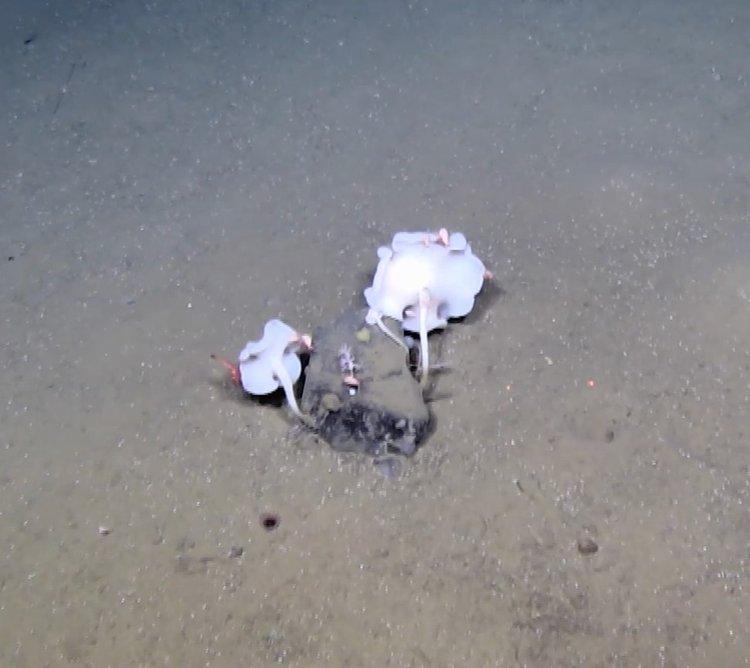Fauna Catalogue
A GUIDE TO THE CRITTERS WE SEE
From deep in the Earth, chemical rich fluids provide energy to support highly productive communities of animals (fauna).
These fauna have special adaptations to live in harsh, extreme environments, like hydrocarbon seeps or ultra hot hydrothermal vents.
This guide shows the main fauna groups we see at Arctic hydrocarbon seep sites.
Decapoda Shrimp
These shrimp are extremely common in the deep sea - we find them in many of our study sites. Although shrimp are fairly common both in the deep sea and the supermarket, shrimp who live in hydrocarbon seeps are probably not very tasty.

Pycnogonida Sea Spider
Pycnogonida actually means ‘dense knees’ - although the knees of this particular sea spider are not particularly knobbly other sea spiders have very dense knees. Sea spiders are voracious predators and the one pictured here is likely aiming for the anemone to the right of the frame.
.png)
Isopoda and Amphipoda
Amphipods and Isopods are among the most common crustaceans in seeps. We can tell isopods (pictured to the left) and amphipods (right) apart by seeing which way they are squished. Isopods are squished vertically (from top to bottom) while amphipods are squished laterally, from the sides.

Actiniaria Sea Anemone
Sea anemones are common on rocky coast lines and tidal pools, well known as being the home of clown fish like Nemo. We also find them in Arctic Ocean at methane seep sites. Mostly, sea anemones live attached to rocks and rarely, if ever, move. However, we have witnessed one errant anemone make it’s home atop a snail, and the two are able to explore methane seeps together - which is likely a very exciting adventure for a normally immobile anemone.

Corallimorpharia (Also a type of sea anemone)
This type of sea anemone is often considered closely related to corals, just lacking certain muscles/skeletal structure.

Brachiopoda
Brachiopods are often mistaken for molluscs, as they look very similar to clams. In this case, they are living together in a clump and a bit covered in sediment so difficult to see the resemblance. Brachiopods were very common during the Paleozoic, however during the Permo-Triassic extinction the populations were decimated and today they primarly inhabit very cold waters - either in polar regions, the deep sea or in this case both deep and Arctic.

Pennatulacea Sea Pens
Although colloquially called sea pens, these particular sea pens look more like flowers. Sea pens in the Umbellula genus may also be bio-luminescent.
.png)
Octopoda Dumbo Octopus
Dumbo octopuses are so named because of their ear-like fins which extend from above their eyes, like the 1941 Disney animated elephant.

Cephalopoda
Slightly more eerie, less cute than the dumbo octopus, we have spotted some unknown squids on our adventures into the depths of the Arctic.

Hexactellinida Glass Sponges
Glass sponges have a skeleton made of silica spicules, and therefore although the look very soft and satiny they actually feel quite rough to the touch, almost like fiberglass. Glass sponges are less common in shallow waters than deep and tend to be found in colder water, like around Antarctica and the North Pacific.

Polychaeta
The primary polychetes we find in Arctic seeps are tube worms - either long and thin tube worms like the Siboglinids (right), or the short and stout Nicomache (left). Tube worms come in a huge variety of shapes and sizes but are often found around cold seeps, vents and organic matter falls in the deep ocean.
